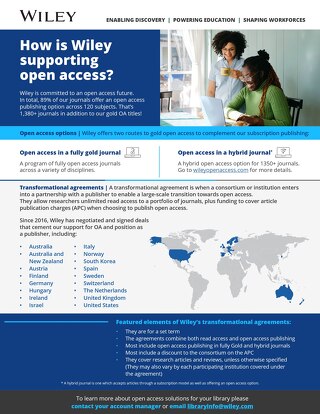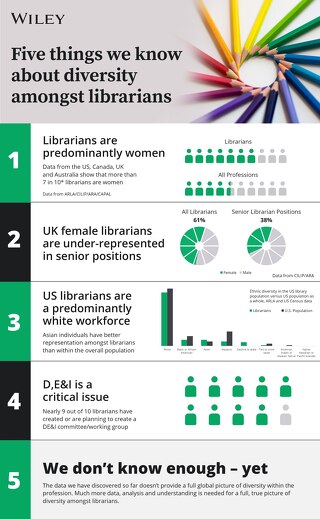kbart-automation-at-wiley
October 20, 2021
Electronic resource librarians are the unsung heroes of scholarly communications. They make sure that researchers can easily connect to relevant content. This requires them to spend a significant amount of time doing behind-the-scenes work, ensuring that all of their licensed content remains discoverable and accessible to their users.
Part of this behind-the-scenes work includes looking in vendor knowledgebases to make sure that the proper content is integrated correctly. If a library has subscribed to a fixed, stock-package collection (like a Big Deal), alignment is easy. They just select the relevant collection in a vendor knowledgebase and all the relevant titles are activated. For libraries with smaller budgets or those unbundling their packages arises the need to account for individual titles. Reconciling individual titles is a manual process; the librarian needs to identify the relevant collections and titles for their institution.
Noses to the grindstone
As one might imagine, this can be a painful and tedious process. Imagine having to select hundreds of individual titles of a single publisher with a large portfolio. Now extrapolate that out to each content provider with which the library has a license. Having to do this work is not only frustrating but is also a drain on library resources. Libraries remain dedicated to resource alignment, and so their staff continues to sift through knowledgebase collections to find their appropriate titles.
Enterprising librarians have shared their tricks and tips in managing this process. Others trade troubleshooting stories at conferences or on listservs. Despite the good will and community-sourced material, libraries still have had to suffer through this manual work. For a long time, there didn’t seem to be an ideal solution.
Our holdings story
Like most publishers, Wiley provided title lists (or institutional holdings) for libraries to assist with electronic resource management. These lists, however, were delivered in a proprietary format. This required libraries to translate this information in a way, so it was reflected in their knowledgebase collections. The consequence of not completing this work could lead to library users hitting unnecessary paywalls and decreasing content usage.
Wiley was also among the publishers who provided the fixed, stock-package title lists to knowledgebase providers. Again, while these title lists were presented in a recognizable industry standard, it didn’t always equate to a usable file for libraries. As a result, libraries were still required to either select their individual titles or convert the Wiley proprietary holdings file into a KBART file for uploading into a vendor knowledgebase.
Wiley Online Library’s migration from a homegrown platform to Atypon’s Literatum was a game changer on the institutional holdings front. Shortly after the migration, institutional holdings files became available in KBART format. They can now be downloaded from the platform’s administrator dashboard for upload into vendor knowledgebases.
While the presentation of holdings in an industry standard was certainly an upgrade, it still required libraries to manually deliver the file to knowledgebase providers. And if there are title or subscription changes, the library needs to manually upload an updated version of their institutional holdings file to the vendor knowledgebase.
The promised land
Around the time of the Wiley’s platform migration, another industry standard emerged as a solution to this pervasive electronic resource issue. The NISO KBART Automation Working Group formed to develop a Recommended Practice. They ultimately published guidelines for how publishers transfer their institutional holdings information directly into vendor knowledgebases.
When implemented by the publisher (and activated by the library) holdings information is automatically transmitted to the vendor via an API. This eliminates the need for manual title management or file delivery. It’s hands-free title management for libraries, meaning no more messy and time-consuming work on the part of the electronic resource librarian.
Wiley has been working closely with Atypon on KBART automation. We expect to enable this functionality for libraries later this year, with partners OCLC and ProQuest-Ex Libris. This has been a long-awaited feature for libraries, and we look forward to delivering it to better meet their needs.
This has been a long-awaited feature for libraries, and we look forward to delivering it to better meet their needs. Wiley has been working closely with Atypon, OCLC, and ProQuest-Ex Libris to ensure that when activated, customers will realize an accurate and timely transmission of their title lists to their library solutions vendors.
Here is the tentative release schedule of this feature on Wiley Online Library:
- November 8th - OCLC WorldShare Management
- December 14th - ProQuest-Ex Libris SFX
- Early 2022 - ProQuest-Ex Libris Alma
Instructions on how to configure KBART automation for your institution can be found in the Wiley Online Library Institutional Administration Guide.










